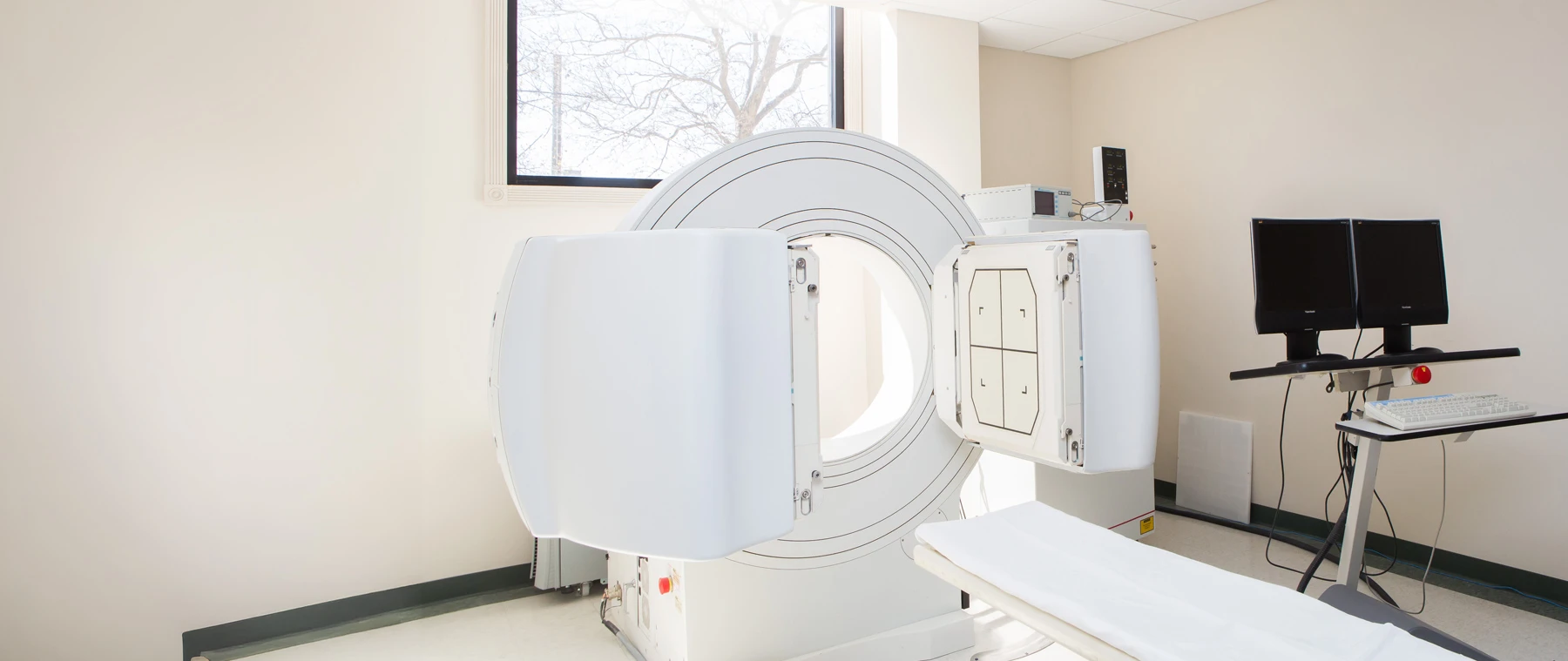Multiplanar Musculoskeletal CT
Technology offers enhanced views of joints and extremities.
What to expect
Refrain from eating and drinking 4 hours prior to your exam
Bring bloodwork, BUN and creatinine levels if you are diabetic
Bring your doctor’s prescription, insurance card, and a picture ID
Images Taken from Multiple Angles Aid in Diagnosis and Treatment
Medical conditions involving joints and other parts of the arms and legs often come with a number of treatment options. Detailed images taken from a number of viewpoints can help physicians make the proper diagnosis and decide on the proper course of care.
The Multiplanar Musculoskeletal CT Procedure
At Main Street Radiology, we use advanced CT technology that captures images of extremities from a number of perspectives – that is, along a variety of planes.
How Does It Work?
- This multiplanar technology offers the best view of what's going on inside the body.
- The process exposes patients to less radiation than does older technologies.
Case History: A 23-year-old man with left ankle pain was referred to Main Street Radiology for a non-contrast ankle CT.

Figure 1

Figure 2

Figure 3

Figure 4
Findings: There is a 2.3 cm osteochondral lesion at the dome of the talus medially, with a 1.3 cm loose fragment depressed within the defect. In addition, a cyst formation is seen beneath the loose fragment within the body of the talus. (Figure 1, Coronal Image; Figure 2, Sagittal Image; Figure 3 Axial Image; Figure 4, 3D Image)
Discussion: Osteochondral lesion of the talus is considered the chronic phase of a compressed or avulsed talar dome fracture. The most common sign/symptom is persistent ankle pain after an inversion injury. The clinical profile includes chronic ankle pain/sprain, stiffness, swelling, ecchymosis, clicking, locking, giving way, and reduced motion.
The average age at presentation is 25 years but is also known to occur in the fifth and sixth decades. The lesion is not common in children. It is more common in males (who comprise 67% of the cases) than females (33%).
The etiology of the lesion is thought to be related to direct trauma or repetitive microtrauma. Trauma and a predisposition to talar dome ischemia with increased joint pressures, forces synovial fluid into the fracture site and prevents healing. The subchondral fracture is then susceptible to avascular necrosis.
The natural history and prognosis, without treatment, include joint stiffness, ankle instability and degenerative arthritis. There is a staging pattern based on non-contrast CT criteria which includes:
Stage I: A cystic lesion with an intact roof.
Stage IIA: A cystic lesion with communication with the talar dome.
Stage IIB: An open articular surface lesion and nondisplaced fragment.
Stage III: A non-displaced lesion and lucency.
Stage IV: A displaced fragment.
Both conservative and/or surgical treatments are available. Conservative treatment is utilized with Stage I and II lesions. They include reduced activity, with limited ankle motion, for Stage I lesions. Casting is performed with acute Stage II lesions. Surgical treatment is performed with Stage III and Stage IV lesions. They included free fragment excision, curettage, drilling, and abrasion arthroplasty.
At Main Street Radiology, joint and extremity CT examinations are performed on a 16-detector spiral CT utilizing 0.75 mm slices. The acquisition of sub-millimeter slices results in near-isotropic resolution, which enables reconstruction of images at any plane or angle from the original data set without losing resolution.
Sagittal, coronal and 3D images are routinely generated from the original axial scan. With older technology, to obtain high-quality images at a different plane, second set of images must be obtained after re-positioning the patient, resulting in higher radiation dose to the patient. This new technology available results in highest-quality images with less radiation to the patients.
Already Scheduled for A CT-Scan?
Already Scheduled for A CT-Scan?
Learn how to prep for your medical procedure.
Five convenient locations
Schedule an Appointment
Online
Fill out this form and we'll contact you as soon as possible. Please do not include any personal or financial information when using this form.
By Phone
Call or text to schedule an appointment. You may text us any required information (name, date of birth, and a picture of your prescription.) and a scheduling representative will be in touch.
- Call Us: (718) 428-1500
- Text Us: (929) 430-2761
HOURS
Monday-Friday: 8 a.m. to 8 p.m
Saturday: 8 a.m. to 4 p.m.
Sunday: 8 a.m. to 2 p.m. (Flushing Office Only)

